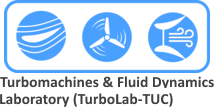BEM-TUC is a Blade Element Momentum (BEM) software, developed by members of the Turbomachines & Fluid Dynamics Laboratory (TurboLab-TUC), which allows for the aerodynamic analysis and performance prediction of both conventional horizontal-axis and diffuser-augmented or shrouded wind turbine rotors, in a remarkably short period of time. Currently, two different releases of BEM-TUC are available; the first one has been implemented in Fortran 90 programming language, while the second one has been implemented C++ programming language by using the Qt cross-platform application for the creation of a user-friendly graphical user interface. The computational model employed in both of the available releases of BEM-TUC is based on the extension of classical BEM theory to the case of shrouded rotors, which is actually implemented by introducing the velocity speed-up distribution over the rotor plane, for the unloaded diffuser configuration. The XFoil airfoil analysis software (developed by M. Drela) is used for the analysis of blade sections. Furthermore, both BEM-TUC releases have been enhanced with several empirical and analytical correction models, dealing with many of the inherent limitations of BEM theory; namely, two different correction models for capturing the power losses related to the blade tip and rotor hub, a drag correction model that accounts for the Reynolds number effects, and a detailed correction model for the accurate calculation of the axial induction factor, at the operating states of the rotor in which the Momentum theory is no longer valid. Besides, two different models for the extrapolation of the aerodynamic lift and drag coefficients to the entire range of angles of attack have been also implemented, based on the Montgomerie and Viterna-Corrigan extrapolation methods. Finally, the calculation of induced velocities at the rotor plane is achieved by applying a fixed-point iteration scheme, which is coupled with a typical relaxation procedure, aiming to dampen the fluctuating behavior of the axial induction factor, during the iterative process.
References:
S.N. Leloudas, G.N. Lygidakis, I.K. Nikolos, "Assessment of a modified blade element momentum methodology for diffuser augmented wind turbines", Proceedings of the ASME International Mechanical Engineering Congress and Exposition, IMECE 2017, 3-9 November, 2017, Tampa, Florida, USA, Paper No. IMECE2017-70288. https://doi.org/10.1115/IMECE2017-70288
S.N Leloudas, G.A. Strofylas, I.K. Nikolos, “Aerodynamic shape optimization of Diffuser Augmented Wind Turbine blades using asynchronous parallel Differential Evolution”, Proceedings of the 9th GRACM International Congress on Computational Mechanics, Chania, 4-6 June, 2018.
S.N. Leloudas, I.K. Nikolos, “Design of Improved Rotor Blades for a Shrouded Wind Turbine Using the RG15 Airfoil Family”, Proceedings of the 7th European Conference on Renewable Energy Systems, ECRES 2019, Madrid, Spain, 10-12 June 2019.
M. Seremeti, Graphical User Interface development for a wind turbine analysis software, Diploma Thesis, School of Production Engineering & Management, Technical University of Crete, 8/10/2019.
Numerical Applications and Simulations










